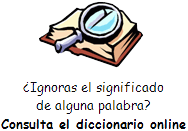 Today
we return to a very common verb form in English – phrasal verbs. You
will find one phrasal verb in every 192 words of written English. They
will make your English sound more natural once you begin using them
correctly. In an earlier program, we explained how and why English
speakers use them. Today
we return to a very common verb form in English – phrasal verbs. You
will find one phrasal verb in every 192 words of written English. They
will make your English sound more natural once you begin using them
correctly. In an earlier program, we explained how and why English
speakers use them.
Today we look at some often-used phrasal verbs. This type of phrasal
verb allows a direct object to come between the verb and the preposition
or adverb. As you will hear, there is a special rule that learners
should know about when using these 10 phrasal verbs.
The structure of phrasal verbs
As you know, a phrasal verb is a phrase with two or more words: a verb
and a preposition or adverb or both. We call the preposition or adverb a
particle when it combines with a verb. Here are two examples:
"Please put the lamp on the desk."
"I think you're putting me on."
In the first sentence, on is a preposition showing the position of the
lamp. In the second sentence, on is an adverbial particle. Put on is a
phrasal verb meaning "fool" or "trick" in this sentence.
An important point is that a regular verb+preposition combination has
two meanings. A phrasal verb, that is, a verb+particle, has a single
meaning within a sentence. Many phrasal verbs have a number of different
meanings in different situations. Yet the meaning of the verb+particle
can usually be expressed with a single Latin-based verb.
Here are two sentences with the same meaning:
"They tore down the old building."
"They demolished the old building."
The verb tear has its own meaning, and so does the preposition down.
They can combine with other words when they are alone. But as a phrasal
verb, tear down, they have one meaning: "destroy."
In 1987, U.S. President Ronald Reagan visited West Germany. He told a
crowd in the divided city of Berlin, "Mr. Gorbachev, tear down this wall!"
Separable phrasal verbs
Now for the tricky part. You know that some verbs are transitive, which
means they have a direct object. When such verbs appear as phrasal verbs,
an object can either separate the phrase or follow it. Here’s an example.
"I decided to throw out my old jeans."
"I decided to throw my old jeans out."
Both of these sentences are correct. The object of the phrasal verb
throw out is jeans. You can use a pronoun instead of jeans and ask,
"Are you sure you want to throw them out?"
However, you cannot ask, "Are you sure you want to throw out them?" Here,
the pronoun them must appear between the verb and the particle.
Finding the frequent phrasal verbs
In recent years, language experts began to use computers to examine a
large collection, or corpus, of written and spoken language. When
researchers look for phrasal verbs, they find that many deal with an
activity. They also find a few verbs combine with many particles. Among
the most common verbs are come, put, get, go, pick, sit and take. These
combine with the adverb particles up, out, in, on, off, and down to make
up a group of very useful phrasal verbs.
Now, let’s look at transitive phrasal verbs. See the list at the end of
the article. The verb get is part of many phrasal verbs. For example, we
use get up to mean "to wake oneself up" or "to awaken someone." For
example:
"My son loves to sleep late. I got him up on time to catch the bus this
morning."
Remember, the pronoun has to come between the verb and the adverb, so we
cannot say, "I got up him."
|
 Sugerencias:
Sugerencias:![]() ). Utiliza el botón derecho del ratón y "guardar enlace" para
descargar el fichero a tu PC, tablet, Smartphone, etc.
). Utiliza el botón derecho del ratón y "guardar enlace" para
descargar el fichero a tu PC, tablet, Smartphone, etc.
![]() Escucha el audio
Escucha el audio
![]() ¿Quieres recibir en tu e-mail gratis y
periódicamente ejercicios, programas gratuitos, explicaciones y otros recursos
para mantener tu inglés sin esfuerzo? Apúntate a nuestro
cuaderno mensual de inglés.
¿Quieres recibir en tu e-mail gratis y
periódicamente ejercicios, programas gratuitos, explicaciones y otros recursos
para mantener tu inglés sin esfuerzo? Apúntate a nuestro
cuaderno mensual de inglés.




